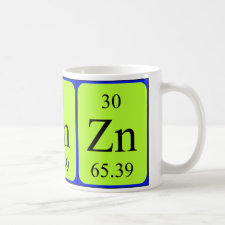
Authors: Buhani, Suharso, Fitriyani AY
Article Title: Comparative Study of Adsorption Ability of Ni(II) and Zn(II) Ionic Imprinted Amino-Silica Hybrid Toward Target Metal in Solution.
Publication date: 2013
Journal: Asian Journal of Chemistry
Volume: 25
Issue: (5)
Page numbers: 2875-2880.
DOI: 10.14233/ajchem.2013.14166
Alternative URL: http://www.asianjournalofchemistry.co.in/user/journal/viewarticle.aspx?ArticleID=25_5_116
Abstract: This research investigated comparative study of adsorption ability from Ni(II) and Zn(II) ionic imprinted polymer [Ni(II)-IIP and Zn(II)-IIP] amino-silica hybrid to each N(II) and Zn(II) ion as a target metal. Adsorbent synthesis was carried out via sol-gel process with an active,active compound 3-aminopropyltrimethoxysilane and a silica matrix from tetraethylorthosilicate. Series of experiments with batch Method were-performed to determine adsorption kinetics, isotherm and selectivity of adsorbent Ni(11)-IIP toward Ni(R) target ion and Zn(II)-IIP toward Zn(II) target ion in solutions. Kinetic models Of Ni(II) and Zn(11) ion for all adsorbents tend to follow a pseudo, second order I kinetic model and a Dubinin-Raduskevich (D-R) isotherm adsorption model. The adsorption capacity value (q(DR) of NO) ion on non-imprinted polymer (NIP), and Ni(II)-IIP is each 21.674 and 31.418 mg(-1), while the adsorption capacity value of Zn(R) ion on Zn(II)-NIP and Zn(II)-IIP is 19255 and 24.633 mg g(-1). 116 selectivity coefficient (a) value for each adsorbent shows that Ni(II)-IIP, adsorbent is more effective upon its Ni(II) ion target metal than Zn(II)-IIP adsorbent with Zn(II) ion as its target
Template and target information: zinc ion, Zn(II), nickel ion, Ni(II)
Author keywords: ionic imprinting, adsorption selectivity, Amino-silica hybrid, metal ion



Join the Society for Molecular Imprinting

New items RSS feed
Sign-up for e-mail updates:
Choose between receiving an occasional newsletter or more frequent e-mail alerts.
Click here to go to the sign-up page.
Is your name elemental or peptidic? Enter your name and find out by clicking either of the buttons below!
Other products you may like:
 MIPdatabase
MIPdatabase









